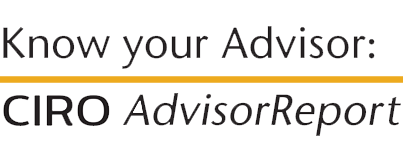The turning of a new year is synonymous with optimism and hope. After a difficult year, it may feel as though optimism is in short supply. Yet, here are some reasons why better times may lie ahead for 2021.
Economic Rebound
While the cooler months have brought a resurgence of the virus and new shutdowns, we shouldn’t overlook the potential for an economic rebound in 2021. After the spring shutdowns, Canada’s economy performed better than expected as things reopened. Employment rebounded faster than anticipated, as did consumer spending. This was in part due to significant stimulus measures. Canada’s stimulus deficit is likely to be the largest globally in 2020, yet with interest rates at near-zero levels the cost of carrying this debt remains historically low.1
The Pandemic\’s Uneven Impact
Unlike most recessions, the economic impact has been particularly uneven. Sectors that have been able to thrive during the pandemic, such as technology, have helped to drive equity markets. Canadian equity markets, largely influenced by energy and resources sectors, have been hindered by lower demand due to the economic slowdown. Yet, Canada’s housing market has shown resilience; many companies have reassessed business models, leaning operations or innovating in the digital space.
What About the U.S.?
The U.S. has chosen a new path forward after a highly contested presidential election, widely watched by Canadians. After an autumn of civil and social unrest, there is hope that change will temper tensions and bring a necessary stimulus package to support Americans throughout the winter.
Hope Comes with the Vaccines
Most notably, we’ve made remarkable progress in the race to find a vaccine. This is an exceptional feat, given the typical vaccine time-to-market is 10 to 15 years. The fastest ever – the mumps vaccine – took four years.
Investing for the Long-term
Progress in combatting a pandemic takes time. Progress in investing may involve greater endurance. During 2020, while the many ups and downs of equity markets captured attention, they aren’t the ones that matter for most longer-term investors. Assuming you can stay the course for long enough, the results can be significant. The Rule of 722 provides a good reminder: at an annual rate of return of five percent, an investment will double in around 14 years. For those who may not think they have the benefit of time, consider that 90 percent of renowned investor Warren Buffett’s wealth was made after the age of 65.3
There\’s Light at the end of the Tunnel
Brighter days lie ahead. Even the worst periods of retrenchment have been followed by new growth, economic expansion and progressing equity values. Moreover, as we saw in 2020, equity markets don’t wait on the sidelines for recovery to happen. Continue to look forward with optimism and hope. Better times may lie ahead for 2021.
For more on what 2021 will bring read Market and Economy Expectations for 2021.
1. As a % of GDP; 2. Rule of 72: It takes approx. 72÷(rate of return) years for investment to double; 3. Based on shares of Berkshire Hathaway (BRK-A). 8/30/95: $25,300; 10/30/20: $302,500.




